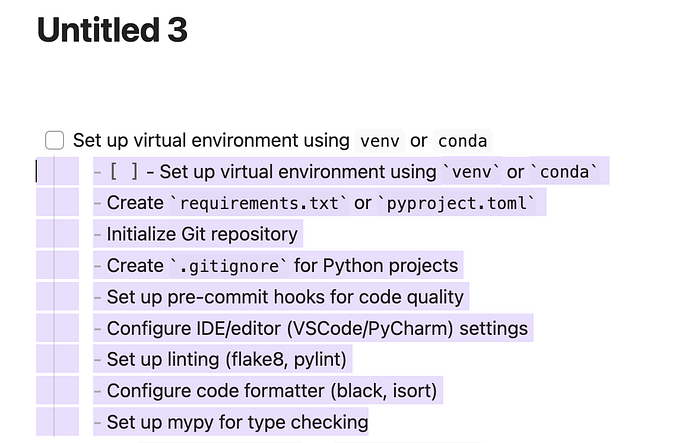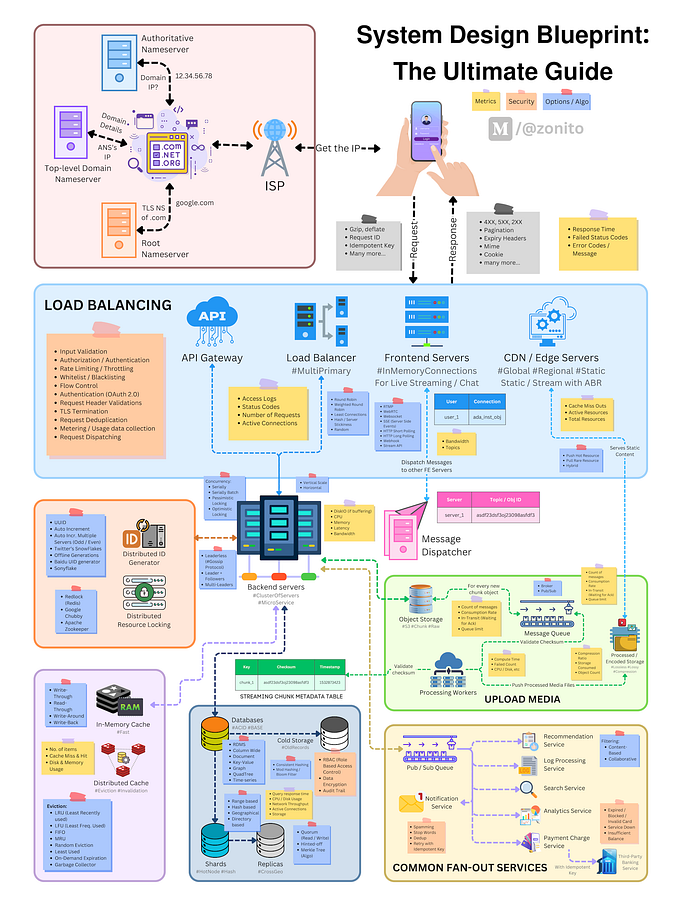Travel and Booking APIs for Online Travel and Tourism Service Providers

Back in 2015, Expedia suggested that travelers make 38 website visits on average to book their trips. While this seems like a lot, for booking hotels, for instance, travelers visit only 4.4 unique websites, according to the study by Fuel and Flip.to. People prefer to make their reservations through ‘all-in-one-place’ platforms. They’ve reshaped user experience unifying and eventually simplifying it for average travelers.
One of the reasons is that travel industry players have become a lot more open to sharing data with each other. A good example to this is Uber which in 2014 allowed third-parties to incorporate the “request the ride” functionality in their applications. Today, your local sightseeing app can let users commute from one landmark to another without switching apps.
How APIs work
In tech terminology, the synonym to this growing connectivity is API. Application programming interface allows for connecting data streams and functionalities between different software products. APIs work as control panels for developers to link different online travel booking software components without dealing with source code. What does this mean for the travel industry? If you run a hotel business, you can let your customers rent a car straight from your website by integrating your room reservation engine with available local car rental providers. This may put a car-rental commission in your pocket or just make your customer’s life easier by eliminating time browsing the web to rent a car.
So, let’s talk about the most important types of APIs in use across the travel industry to combine various travel components in one application:
- Ticket booking
- Room reservations
- Car rental
- Business travel management
- Public transport and taxi
- Restaurant and hotel reviews
- Sightseeing and events
For the online travel agency (OTA), putting all these features under the umbrella of one application merits serious consideration. For local or niche travel services providers, this list may be shorter.

GDS systems provide the widest data coverage, while you can find more task-specific APIs from niche companies
Global distribution system (GDS) APIs from Amadeus, Sabre, and Travelport for comprehensive booking and reservations coverage
Main users: OTAs, Metasearch Engines
The main data source and reservation point of contact for online travel agencies are global distribution systems (GDSs). The GDS collects and consolidates travel data from a wide spectrum of service providers and allow agents to reserve airplane seats, rent cars, book hotel rooms, etc. This way travel agencies don’t have to directly connect with hundreds of airlines, hotels, and other end providers. They also provide APIs to integrate the reservation support into OTA booking engines to let travelers book online.
GDSs mostly focus on five types of reservations:
- Airplane seats
- Hotel rooms
- Car rentals
- Cruise lines and ferries
- Railways
Basically, there are three main GDS players on the market: Amadeus, Sabre, and Travelport. According to Sabre, these three cover 99,9 percent of the GDS market share.

GDS market shares differ across regions
As a travel agency or any other travel business, you can use one of the GDS APIs or more to achieve broader coverage. Our client, online travel agency Fareboom, which provides its customers with a low-airfare search, uses multiple GDSs and private airfares from airlines directly. However, if your business model doesn’t revolve around the lowest fares, you may stick with using only GDS, without bothering to engage airlines directly. Amadeus, for example, claims to cover 95 percent of the global scheduled air seating.
NB: It’s interesting to note that a GDS reservation capacity isn’t necessarily equal to that supported in APIs. GDSs can be operated manually by travel agents that make reservations for their clients. APIs, on the other hand, exist to automate booking, excluding any manual efforts from the agent. Sometimes a GDS would provide broader services for manual booking compared to the API-based one. We’ll mention one such limitation in a bit.

Depending on particular APIs you are going to use, you may consider their industry coverage
Amadeus
Amadeus has two sets of APIs. The main set, which is called Amadeus Web Services, and the second one — Travel Innovation Sandbox. We use the word “sets” because there’s no single API for all data services available. Basically, you’re free to choose the kind of data you want to operate with. For instance, meta search engines that just aggregate data require no booking functionality.
Amadeus Web Services. The main set of APIs covers seven distribution types:
- Airlines
- Railroads
- Hotels
- Car rentals
- Transfers (airport private or taxi transfers, which is a new feature that we discussed in the July 2017 news and trends report)
- Cruises
- Travel insurance booking
Every type contains multiple APIs, some of which are purely informative like finding the lowest fares or searching flexible-schedule fares. Others are made for ticket booking. This allows for greater adaptivity when configuring the set of services for your product.
Travel Innovation Sandbox. These APIs aren’t aimed at production use. The sandbox is designed for students, individuals, and early startups that are at the prototyping and experimentation stage. Sandbox APIs are about information, not booking. They allow experimentation with GDS capabilities to better configure the final product before it goes live. Sandbox also has strict limitations. Most APIs won’t allow you to make more than 5,000 calls per user per month, and some are limited to only 1,000 monthly data transactions.
Sabre
Sabre APIs cover pretty much the same set of functions that Amadeus provides. Sabre divides its APIs into eight groups:
- Airlines
- Ground transportation (car rentals and rails)
- Cruises
- Hotels
- Profiles
- Trip management
- Session management
- Utility
Sabre has more detailed APIs division, including such categories as profiles, trip and session management, and utilities. Note that, currently, the system doesn’t provide insurance and airport transfers options. If these are critical to you, better stick with Amadeus.
Travelport
Travelport unites three GDS systems: Apollo, Worldspan, and Galileo. While the systems have their own brand names, in terms of APIs, they are combined into a single Travelport Universal API. Unlike Amadeus and Sabre, the universal API is a bundle of functions that embrace:
- Three GDSs: Apollo, Worldspan, and Galileo
- Air API connect
- Rail API connect
- Travelport rooms
- Fares and Ancillaries
Currently, Travelport doesn’t provide cruise API options for online travel agencies that want to automate sea travel booking for their customers. Cruise is only available for direct manual booking by travel agents. Along with Sabre, Travelport doesn’t include insurance and transfers into their APIs.

Currently, Amadeus provides the largest API variety
The challenge of choosing the best GDS API has been around for years. While there are technical differences that may tip the scales, market coverage also plays an important role. Common practice is to use the most popular GDS for a region as this means slightly better seating options and pricing from carriers. From this point of view, Amadeus would be the best fit for targeting Europe, while Sabre suits travel in North America.
GDSs provide general data for booking and reservations. However, if you need specific solutions like hotel booking or car rentals, it’s worth looking at dedicated products.
Flights data: FlightStats API for traveler flight support and disruptions management
Main users: OTAs, travel applications providers
While GDSs send general flight data, some OTAs and travel application providers strive to help travelers after booking is completed. For instance, the in-flight support app that we developed for Fareboom helps travelers with timely notifications before a departure, tracks flight status, and alerts about delays. To deliver such services, you have to retrieve in-depth details about flights, connections, and weather.
The most popular API for these purposes is by FlightStats, a global flight tracker and travel applications provider. FlightStats APIs combine two main products:
FlightStats Flex APIs. This set of services mainly operates with actual flight data with real-time tracking which includes:
- Flight status and track
- Historical flight status
- Schedules and connections
- Airlines and airports
- Equipment (aircraft IATA codes, name, propulsion, etc.)
- Delay Index
- Ratings (performance ratings to define which flights are more likely to be on-time between given airports)
- Weather
- FIDS (flight information display systems found in airports)
FlightStats Trip Data APIs. This set focuses on improving the itinerary experience for travelers and travel agents informing them about flight disruptions. These include alerts about flights and legs, especially in cases of connection problems and delays, to enable proactive reactions to these events.
FlightStats APIs are known in the development community as well documented and coherent. They allow for deep customization to tailor travel software to specific business and UX needs.
Hotel rooms reservations: APIs by Expedia and Priceline to leverage capacities of the largest OTAs
Main users: smaller OTAs and travel application providers, property owners
There are two main players dictating the rules of the OTAs market: the Priceline group (Booking.com, Kayak, Momondo, etc.) and Expedia (Expedia.com, Hotel.com, Trivago, etc.) If you mostly look at hotel booking, it’s worth working with these two players. Not all APIs are publicly available and you’ll have to become their partner to fully leverage their capacities.
These two giants both have their partnership networks. Expedia Partner Central is aimed at hotels and Expedia Affiliate Network at online travel agencies and other travel software providers. Priceline Partner Network supports APIs for smaller travel agencies and travel applications owners.
Expedia Partner Central
Expedia Connectivity APIs are built with the idea of streamlining property updates both for hotels and ultimately Expedia end users.
Booking availability, retrieval, and notification. This set of APIs helps hotels automate booking by instantly updating property availability and sending notifications as soon as someone reserves a room through the Expedia network.
Product management. This set of APIs allows hotels to instantly send any edits and updates about room types and their configurations, onboard new properties, or add images.
Expedia Affiliate Network (EAN)
The EAN API provides access for online travel agencies that want to incorporate hotel booking support into their products. The API will allow for:
- Receiving hotel lists
- Booking
- Retrieving itineraries
- Cancelling reservations
- Receiving room images and hotel info
- Defining payment types.
Expedia Public APIs
Expedia also provides a set of public APIs that mainly have informational search capacities and sometimes duplicate features available in EAN and Partner Central solutions. They aren’t high priority for most users but support additional functionality that can’t be achieved with the main products. Here are some of them:
Natural Language Hotel Search will allow your customers to look for accommodation by providing vague descriptions like “romantic hotels in Rome” or “children friendly hotels in Spain”. This one can be very useful for building travel chatbots, for instance.
Travel Trends can return answers on requests about time-dependent events. You can suggest visibility into the current popularity of flight routes or hotel rooms among travelers.
Unreal Deals searches specifically for cool packages like free flights, two free hotel nights, or room upgrades.
Priceline API
Priceline, on the other hand, focuses on online travel agencies only or any other travel tech suppliers that help their customer find travel related data. Currently, the Priceline API allows for retrieving and booking:
- Hotels
- Cars for rent
- Flights
- Vacation packages
If you look for the Booking.com connection to source the largest network of hotels, the affiliate program is currently closed. As Priceline owns Booking.com, it’s worth considering Priceline API integration first.
Car rentals: Rentalcars.com integration to reach the largest car hire pool supported by Priceline
Main users: OTAs, travel applications providers, hotels, airlines
As you’ve noticed, multiple players on the market are bundling their services with car rentals. GDSs and main OTAs already support car rentals.
However, Rentalcars.com is currently the largest provider in the sphere owned by Priceline. If you look at embedding car rental support only into your website, it’s worth considering their services as Rentalcars works across about 48,000 locations around the world in 163 countries.
Rentalcars offers two main options: 1) put a customizable banner on your website, 2) become Rentalcars Connect partner and then leverage available technology through the API. The first option obviously isn’t an API and eventually, your users will be landing on Rentalcars.com to complete their reservation.
The second option, on the other hand, isn’t limited to a single API. The connect partners can utilize full-blown Rentalcars product integration and services including dynamic widgets, search panels, etc.
Business travel: travel management and planning APIs from Concur to track expenses and integrate itineraries
Main users: applications providers that target business travelers, OTAs
The main player in the business travel market is Concur. The company offers a cloud-based travel management platform that helps businesses manage trips, track travel expenses, book flight seats, hotel rooms, and rent cars.
Concur API
Concur strives to engage the development community in building and incorporating their applications with Concur business profiles. How does this work? Concur API aims at two main use cases:
Travel and itinerary support for business travelers. As business travelers book hotels and flights through providers’ apps, their travel data synchronizes with a Concur traveler profile. For instance, if a user has a business trip flying United Airlines, he or she may connect a United MileagePlus profile to Concur to make business trip reservations straight from the United Airlines Website. This way, all business trip data is sent directly to Concur.
Expense Management. All payments that business travelers make during their trips are automatically synchronized with a Concur profile to track expenses or pay from a corporate bank account. Uber, for instance, has integrated Concur for these purposes.

Concur integration into the Uber app. Image credit: Uber
All apps that have Concur API integration are featured in the dedicated App Center that Concur clients use.
Tripit API
Tripit is another product by Concur which doesn’t limit its target audience to business travelers only and aims at all types of users. The system consolidates a user’s travel data like hotel, flight, and restaurant confirmations and turns it into a neatly organized itinerary. Travelers can see what’s coming next and what they should do.
Tripit API works pretty much the same as the main Concur API. For instance, it allows for embedding an “Add to Tripit” link on the travel booking confirmation page of your website or adding Tripit travel plans to a website or applications, enabling users to configure itineraries through Tripit without leaving your resource.
Reviews and ratings: TripAdvisor Content API for social proof
Main users: OTAs, hotels, travel applications providers
Just recently, we’ve covered best UX practices in booking and reservations websites. One of the main points is that 70 percent of people must look at about 20 reviews before they book travel or accommodation services online. This social proof is hard to achieve with your own reviews system if you are a hotel, for instance, or another property provider. But TripAdvisor is a trusted source containing over 200 million reviews.
TripAdvisor Content API allows businesses to incorporate the main content types that the service collects from its users and update them in real time. TripAdvisor works with accommodations, restaurants, and attractions providing the following types of content through their API:
- Location ID
- Name and address
- Latitude and longitude
- Reading and creating reviews (basically, users will be able to leave reviews through your website or app)
- Ratings and awards (TripAdvisor ranking, subratings, the number of reviews the rating is based on, etc.)
- Categories and subcategories (price level, accommodation category, attraction type, restaurants, and cuisine).
Public transportation: APIs to support the get-around experience
Main users: global and local travel applications providers
Not all travelers rent cars. And with the recent trend of making cities more pedestrian-friendly, especially in Europe, the use of public transport is a big part of the travel experience. As we mentioned, Uber has its own API to incorporate the “request the ride” function into third-party applications. Today the API is used in such familiar products as Google Maps, Transit App, and TripAdvisor. What about public transport APIs? There are multiple options to consider.
Google APIs
Embedding Google Maps is quite common today. The Google APIs are open, well-documented, and widely used across industries. However, Google also provides APIs for tracking public transport routes and schedules.
General Transit Feed Specification (GTFS). The API is used both by applications providers and — very important — transit agencies that share public transport data to let users instantly configure their get-around experience. This API sends static only data, which means users can see schedules and routes, but can’t track disruptions.
GTFS Realtime. As the name clearly states, this extension to the main service aims at providing real-time data coming from transit agencies about delays and schedule changes.
While this sounds great, you can’t expect it to work in the lion’s share of locations around the world. So, if you build apps and want to deliver extra value with real-time public transport updates, it’s worth considering local alternatives.
Local APIs from owners and consortiums
You can expect to find decent APIs from companies operating in your target regions. While the quality and standards alignment of these APIs varies, they can provide real-time updates and even additional information like availability of car sharing or bikes near a railway station. Some examples of these are APIs from Dutch Railways and French National Railways, that update in real time about disruptions and engineering work.
Sometimes the APIs are born as a result of a consortium of data owners and reusers. One such example is OpenTripPlanner, the API providing in-depth understanding of city transportation.
Things to do and restaurants: APIs to give travelers attractions visibility
Main users: OTAs, local travel providers, travel applications providers
There are two main sources for finding attractions and things to do for your customers. These are 1) local services like London Theatre API and 2) larger vendors that aggregate and share data combined with ticket purchasing support.
Ticketmaster APIs. Ticketmaster is the largest events booking provider on the market. It covers concerts, festivals, plays, and sports events across the United States, Canada, Mexico, Australia, New Zealand, the United Kingdom, Ireland, other European countries, and more. The service claims to reach about 230, 000 events worldwide. Back in 2016, it released multiple APIs to let third parties embed the Ticketmaster events search and booking support into their products. There are two main ways you can work with Ticketmaster APIs:
- Use Discovery API and Commerce API only. This is aimed solely at an information search. You will be able to source events, filter them by location, type, and retrieve images.
- Use Partner API on top of the Discovery and Commerce ones. This one allows your customers to directly book from your resource, but you’ll have to enroll in the Ticketmaster affiliate program.
Ingresso TicketSwitch API. The product has rich coverage for events, seating availability, and supports ticket purchasing and reservations. Ingresso sources ticket data and sends reservations directly through venue ticketing systems, which ensures real-time updates. The API is used by Amazon Tickets.
Expedia Things to Do. We mentioned Expedia Public APIs. This is one of them. The API needs time and location requests to return results of the upcoming events. In case the time isn’t defined the system will retrieve events for the nearest 14 days for the given location. As all Expedia Public APIs, this one is purely informational and won’t allow your customers to book tickets for these events.
OpenTable Affiliate Program. The main option for those who want to add restaurant table booking is to apply for the OpenTable affiliate program. It will allow you to source all OpenTable options, but users will still have to book through OpenTable.com. Once you reach over 100 monthly reservations as an affiliate, you will be able to leverage revenue-sharing opportunities. However, not all applicants are becoming partners. That’s why there’s an unofficial OpenTable API. It supports the same set of data and doesn’t require to contact OpenTable directly.
How to Choose the Right Travel API
We’ve covered just the tip of the available travel APIs iceberg to provide you with basic information on integration capabilities that the travel community shares. So, regardless of whether you use one of the products mentioned above or look for something specific, there are general recommendations for choosing a suitable API for your travel business.
- Look at popularity. Programmableweb suggests looking at Google Trends to understand how popular the product is. Popularity isn’t only a proof of quality but also the foundation for a community that builds around a product. The more developers using the API, the more pitfalls your team will be able to resolve through communication with fellow engineers. Another good sign is a dedicated forum letting developers discuss issues there.
- Evaluate documentation. Look for an elaborate documentation with FAQs. Some providers don’t showcase the documentation upfront, requiring additional contracts. If the documentation is not public, make sure that you’ll be able to play with a demo. Expedia, for instance, allows you to try its public APIs right in the documentation section.
- Check for standards compliance. Even though an API may provide a great feature list and functionality, ensure that your developers have checked the main REST and SOAP standards compliance.
- Consider customization. How customizable is the API or a set of them? Must you use the entire bundle or you can choose specific data records that you want to retrieve? FlightStats, Sabre, and Amadeus APIs are well recognized for their customization potential.
- Notice limitations. These may be regional, language, or partnership-related limitations. Most owners provide this information asking you to contact their support teams or describe what kinds of limitations are there.
As the world and the travel industry grows increasingly more connected, application programming interfaces and the right approach to working with them define whether you source the right data and eventually deliver enough value to your customers.
Originally published at AltexSoft’s blog: “Travel and Booking APIs for Online Travel and Tourism Service Providers”








